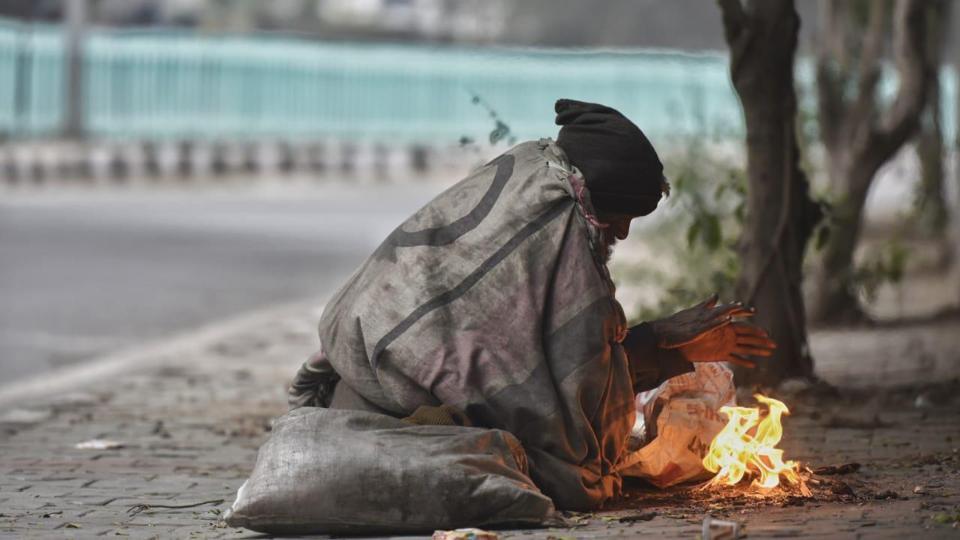As people prepare to usher in the New Year, easterlies have started improving the severe cold spell which was impacting northwest India for nearly a fortnight now.
According to India Meteorological Department (IMD), the wind direction changed from north-westerly (which brought cold winds from the Himalayas to the northern plains) to easterly (which brings moist air from Bay of Bengal) which led to a marginal rise in the minimum temperature this morning.
The minimum temperature at Delhi’s Safdarjung observatory was 4.8 degree Celsius on Tuesday morning compared to 2.6 degree Celsius on Monday morning. Monday was also the coldest day with a maximum temperature of only 9.4 degree Celsius, lowest since 1901.
“When the wind direction is changing, winds are very low making conditions very conducive for fog formation which is why we saw very dense fog yesterday. Today after change in wind direction there was shallow fog all over north India. We are expecting cold spell to abate from tomorrow. The maximum temperature could be 3-4 degrees above what we saw yesterday when there was record low day temperatures across northwest India,” explained Kuldeep Shrivastava, head of Regional Weather Forecasting Centre.
The minimum temperature on Tuesday at Hisar was 4.5 degree Celsius, 2.2 degree Celsius at Mount Abu, 3.4 degree Celsius at Bahraich, 3.8 degree Celsius at Bhatinda and 4.6 degree Celsius at Ambala indicating a marginal improvement in night temperatures compared to previous days.
“Yesterday, Severe Cold Day conditions were observed in most pockets over Punjab, Haryana, Chandigarh & Delhi, Uttar Pradesh and Bihar; in isolated pockets over Jammu & Kashmir, Uttarakhand, north Rajasthan and north Madhya Pradesh; Cold day conditions in isolated pockets over north Jharkhand and West Bengal. There is likely a gradual improvement in Cold Day conditions from today. These severe weather conditions are likely to abate from January 1, 2020, due to change in wind pattern at lower levels,” IMD’s morning bulletin said.
A western disturbance is “seen as a cyclonic circulation over Afghanistan and neighbourhood in mid tropospheric levels. Under its influence along with interaction with lower level easterlies, scattered to fairly widespread rainfall accompanied with thunderstorms, lightning and hail is also likely in major parts of northwest, east and adjoining Central India during January 1 to 3, 2020,” the bulletin added.




























 WhatsApp us
WhatsApp us
Pingback: Buy Vyvanse Online
Pingback: data sdy
Pingback: kahpe siteleri
Pingback: 안전바카라
Pingback: guaranteed ppc
Pingback: 카지노사이트
Pingback: knockoff omega vintage constellation
Pingback: Epilepsy and CBD
Pingback: web so de
Pingback: how to make your transitions smooth on video star
Pingback: Buy THC Vape Cartridges Online
Pingback: Bitcoin Era Online
Pingback: 메이저놀이터
Pingback: orangeville real estate agents
Pingback: 안전공원
Pingback: Harold Jahn Canada
Pingback: Regression testing meaning
Pingback: replica the best swiss imitation watches
Pingback: 토토사이트
Pingback: replica rolex
Pingback: where to order weed online
Pingback: buy Ritalin Online
Pingback: Digital Transformation
Pingback: ASROCK A75M-ITX manuals
Pingback: Elgato Eye TV Hybrid manuals
Pingback: wigs for women
Pingback: DevSecOps
Pingback: Handyman Near me
Pingback: 먹튀검증
Pingback: Prostate Help
Pingback: fake rolex
Pingback: good cvv sites
Pingback: how long does it take for shrooms to kick in
Pingback: sekabet giris
Pingback: credit card dumps free